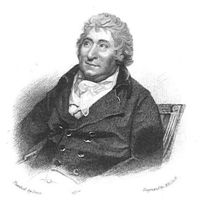Annotation:Jolly Young Waterman (The): Difference between revisions
No edit summary |
No edit summary |
||
| Line 31: | Line 31: | ||
<p><font face="garamond, serif" size="4"> | <p><font face="garamond, serif" size="4"> | ||
''Recorded sources'': <font color=teal></font> | ''Recorded sources'': <font color=teal></font> | ||
<br> | |||
<br> | |||
</font></p> | |||
<p><font face="garamond, serif" size="4"> | |||
See also listing at:<br> | |||
Mainly Norfolk: English Folk and Other Good Music [http://www.informatik.uni-hamburg.de/~zierke/peter.bellamy/songs/thelondonwaterman.html] <br> | |||
The Contemplator [http://www.contemplator.com/sea/waterman.html]<br> | |||
</font></p> | </font></p> | ||
<br> | <br> | ||
Revision as of 22:55, 24 March 2012
Tune properties and standard notation
JOLLY YOUNG WATERMAN, THE (An Og-badoir Greannmar). AKA - "An Og-Badoir Greannmar." English, Air (6/8 time, "cheerfully"). D Major. Standard tuning (fiddle). AB. Composed by English composer Charles Dibdin [1] (1745-1814) who also wrote lyrics for his melody, and included in his successful opera The Waterman (1744). O'Neill obviously thought it had Irish associations, as he included it in Music of Ireland (1903).

Dibdin's lyric begins:
And did you not hear of a jolly young waterman,
Who at Blackfriar's Bridge used for to ply;
And he feather'd his oars with such skill and dexterity
Winning each heart and delighting each eye;
He look'd so neat and row'd so steadily,
The maidens all flock'd in his boat so readily,
And he eyed the young rogues with so charming an air,
He eyed the young rogues with so charming an air,
That this jolly young waterman ne'er was in want of a fare. .... [from T. Dibdin's Songs of the late Charles Dibdin, 1850]
Source for notated version:
Printed sources: O'Neill (Music of Ireland: 1850 Melodies), 1903; No. 530, p. 92.
Recorded sources:
See also listing at:
Mainly Norfolk: English Folk and Other Good Music [2]
The Contemplator [3]
